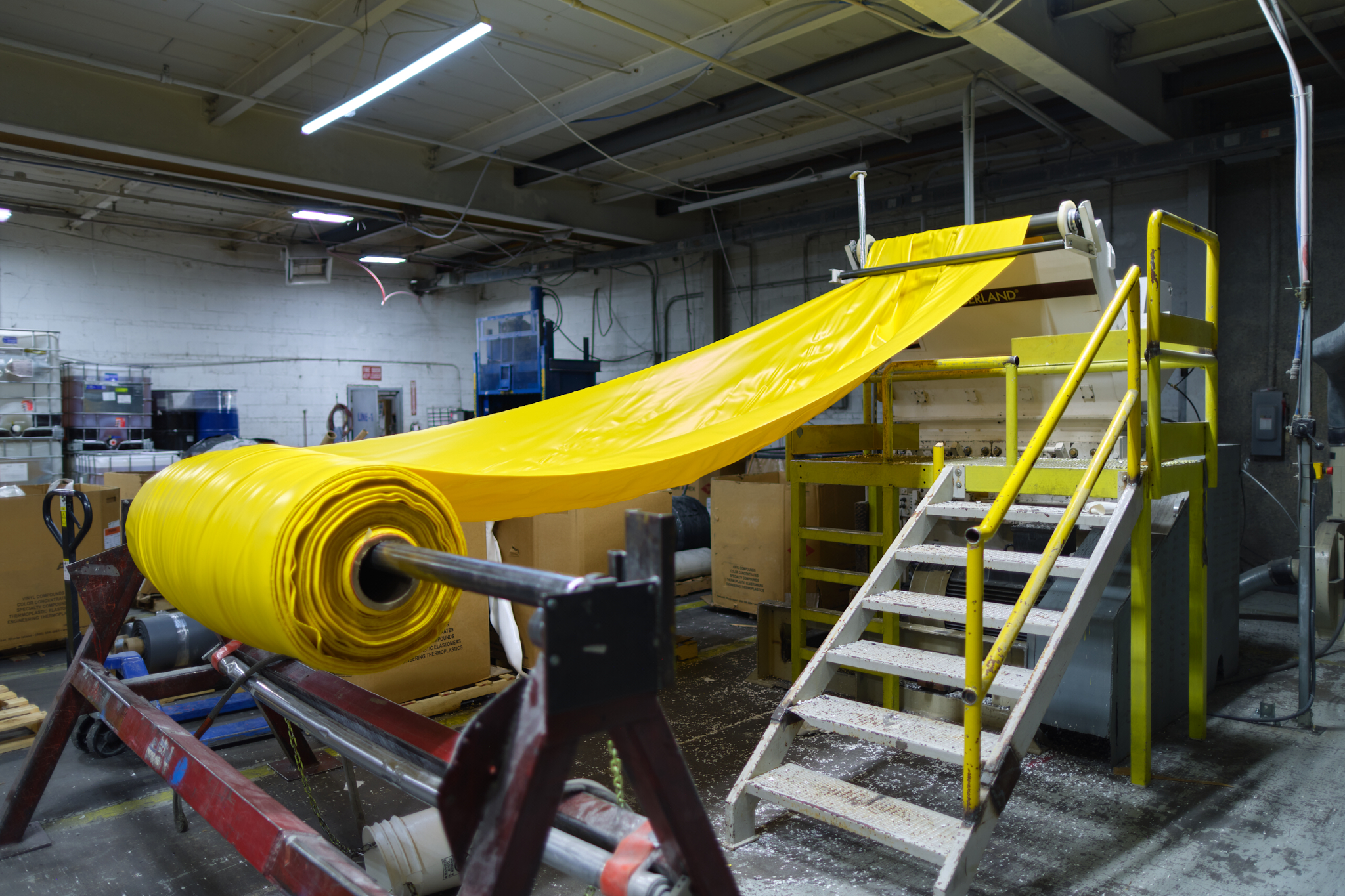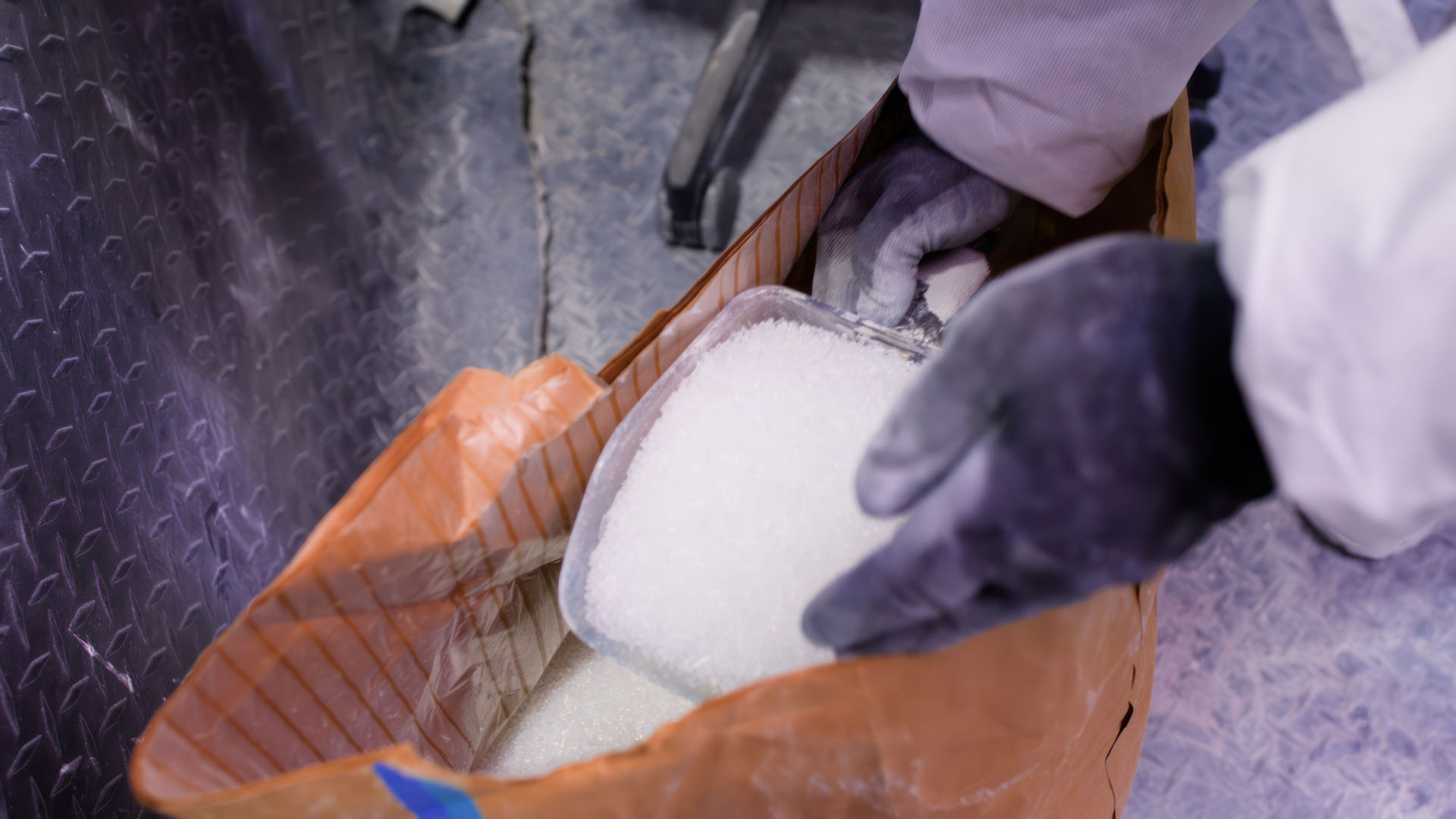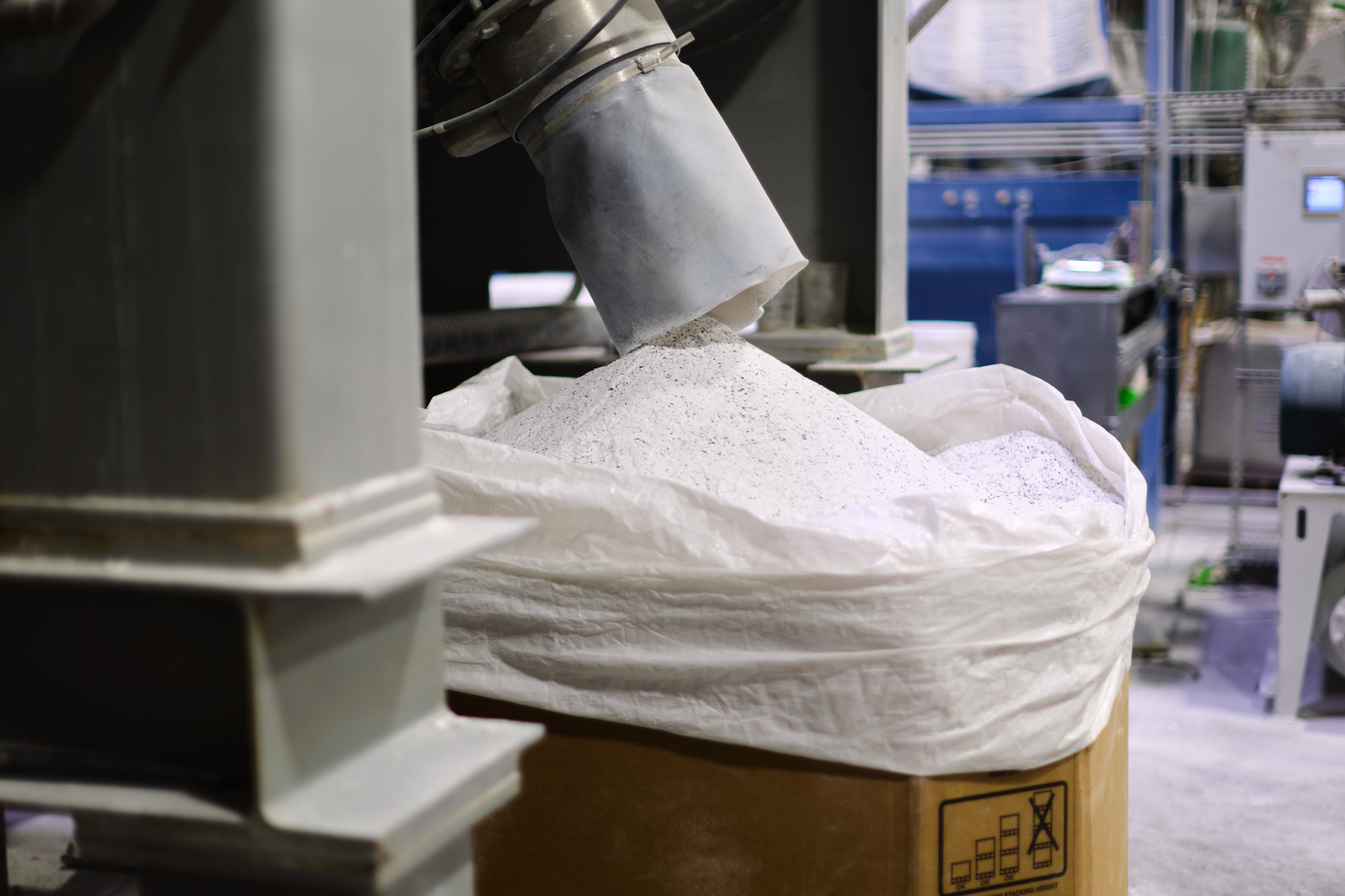
Polyvinyl chloride (PVC) is a synthetic thermoplastic polymer that is used extensively in manufacturing, construction, building materials, the chemical industry, medical applications, and more.
PVC starts out as PVC resin, a raw material that can then be treated with chemicals or other additives to create the desired properties for the finished product. It is a naturally rigid material. Plasticizers can be added to create flexible, soft PVC. Rigid PVC and flexible PVC materials have different use cases.
PVC resin possesses good physical and chemical properties, ensuring its strength and versatility across various industrial and construction applications. Its outstanding characteristics include its versatility, durability, chemical resistance, and affordability. It also provides excellent abrasion resistance, ideal for high-traffic and corrosive environments.
Numerous products you use or encounter every day are made from PVC: window profiles and doors, home siding, vinyl flooring, roofing products, wires and cables, inflatable products, faux leather clothing and accessories, and plastic membership cards are just some examples of everyday products that likely started their life as PVC resin.
In recent years, concerns have been growing around the environmental impact of PVC resin and PVC products. Fortunately, the industry is taking notice and trying to shift toward sustainable practices.
In this article, we will explore the environmental impact of PVC and the available solutions. We will consider the various ways PVC can be reused and kept in circulation, sustainability efforts taking place throughout the industry, and the future outlook of PVC.
Understanding Polyvinyl Chloride (PVC), Vinyl Chloride Monomer, and PVC’s Environmental Impact
PVC is derived from natural gas and chlorine. It is manufactured through a process called polymerization, through which vinyl chloride monomer (VCM), the key raw material in PVC, is converted into long chains.
VCM is produced by reacting ethylene with chlorine. After polymerization, various additives can be added to enhance the desired properties of the PVC. The raw, powdered form of PVC is called PVC resin.
All of this highlights the urgent need for more responsible use of PVC and more sustainable lifecycle management for this common material.
Types of PVC Recycling
One of the best ways to extend the lifespan of PVC and reduce its environmental impact is to recycle it. There are several methods by which this can be achieved, and more and more companies across all industries are now relying on recycled PVC to produce a wide range of products, from films to pipes to industrial applications, thereby reducing their environmental impact and adopting more sustainable practices.
Mechanical Reclamation
This method has been used for decades. It involves separating PVC and then grinding it into small particles that can be reused. For example, old vinyl siding can be removed from a home, ground up, and repurposed into new products. Here at RMA, we shred “bad rolls” of PVC with imperfections, allowing them to be reused.
Mechanical reclamation and recycling accounts for the vast majority of PVC recycling in the context of both post-industrial and post-consumer PVC.
According to the Chemical, Fabric and Film Association (CFFA), an international trade association representing manufacturers of polymer-based fabric and film products, 99% of manufacturing waste is reprocessed and millions of pounds of post-consumer vinyl are recycled.
There are two main types of mechanical recycling lifecycles for PVC: “cradle to grave” systems and “cradle to cradle” systems. “Cradle to grave” systems ultimately end with the products in landfill but focus on extending their lifespan as long as possible, whereas in a “cradle to cradle” system, the products will be turned into new products. This is the gold standard for sustainability and is reflected in how we do things at RMA, turning recycled roofing materials into new products and working closely with CFFA to determine the best ways to do this.
Closed-Loop vs. Open-Loop Systems
Closed-loop and open-loop are two different kinds of systems for reducing PVC waste. In a closed-loop system, the aim is to create new PVC resin and PVC products that are the same or similar to the original product. For example, old PVC pipes for the construction industry might be broken down and then made into new pipes.
In an open-loop system, on the other hand, the PVC is reused for a different purpose. For example, PVC that was once used in low slope roofing might be repurposed for industrial flooring for use in commercial kitchens.
Both open-loop and closed-loop systems have advantages, and both can help create a more sustainable PVC industry. Closed-loop systems are ultimately more sustainable when implemented properly, as they reduce waste and resource depletion by keeping items in circulation. However, open-loop systems are often easier to implement and can still play a key role in reducing waste.
What Manufacturers Are Doing to Improve Sustainability

Manufacturing is a resource-intensive industry and one of the leading users of polyvinyl chloride products. However, many manufacturers are taking great steps to switch to more sustainable PVC usage. Here are just a few ways we have seen manufacturers achieve this.
Use of Reclaimed Content
By incorporating post-consumer or post-industrial PVC resin into their processes, manufacturers are reducing waste and contributing to reducing the amount of new PVC resin that will need to be produced.
Eco-Friendly Stabilizers and Additives
Many manufacturers are reducing or replacing harmful additives in their PVC products. Lead-free alternatives replace traditional lead-based stabilizers, which hurt human health and the environment.
Lead-free stabilizers provide heat stability and lubrication during PVC processing. They can also improve the properties of the finished product and remove “fish eyes,” an effect caused by hard, un-gelled lumps of PVC resin in the final product.
Enhancing Process Efficiency
By reducing waste, water usage, and energy consumption in their production processes, manufacturers reduce the overall environmental impact of their use of PVC. For example, closed loop cooling solutions for chillers are an energy-efficient and durable solution.
By far the biggest incentive to manufacturers, however, comes from the financial savings they can make by reducing waste and eliminating the cost of disposing of materials in landfills. In the last decade, many companies have seen that this is not only good for the environment, but can also be good for the bottom line. By adding back recycled materials, companies can reduce waste in their plants and gain back valuable resources
Green Certifications & Standards
Numerous certifications and quality control processes exist to reward and incentivize high standards of sustainability in manufacturing and beyond.
For example, the NSF/ANSI standards developed by the National Sanitation Foundation (NSF) International monitor the safety, performance, and environmental impact of PVC pipes and other materials utilized in drinking water systems.
The Global Recycled Standard focuses on product material content, and ISO 14001 sets an international standard for environmental management systems. VinylPlus in Europe focuses on creating a circular economy, responsibly sourcing PVC and PVC resins, and minimizing environmental impact throughout the supply chain.
Innovations in Polyvinyl Chloride Resin Production
Polyvinyl chloride relies on fossil fuels, which are non-renewable and highly polluting. However, advances in materials science mean that bio-based and renewable PVC resins are starting to emerge. Bio-based PVC is made from renewable, plant-based raw materials and can have the same physical properties, rigid and flexible applications, and durability as traditional PVC resins.
Unfortunately, bio-based PVC does not yet offer the same low cost as its petrochemical counterpart. However, as bio-based PVC resins become more common, we expect them to correspondingly become more affordable.
There are also increasing innovations in the additives that are added to PVC resin to make PVC products. For example, safer plasticizers will significantly reduce the environmental and health impact of manufacturing and using soft PVC and PVC sheets.
In addition, the increasing integration of smart manufacturing processes using technologies such as artificial intelligence (AI) will help to reduce waste and emissions throughout the supply chain over time.
Challenges and Limitations
Despite the impressive strides forward in the reuse and reclamation of polyvinyl chloride resins in recent years, there are significant infrastructure gaps in some regions. There are also significant contamination and sorting issues. This can mean that, in practice, far more PVC is wasted than we would ultimately like to see.
In addition, chemical-based reclamation processes and bio-based materials come at a significant cost, putting them out of reach of many manufacturers.
Manufacturers face a challenge to balance performance, safety, and sustainability in their use of PVC.
The Future of Sustainability in the PVC Industry
With the push for sustainable practices and protecting our planet becoming ever more pressing, we expect that regulatory pressures and upcoming legislation will significantly impact the transition to a more sustainable use of PVC.
In particular, we expect that increasing extended producer responsibility (EPR) legislation will make PVC resin manufacturers responsible for the entire lifespan of the material, including its eventual disposal.
Continued collaboration between manufacturers, recyclers, and regulatory bodies will be required to meet the ambitious goals of creating a circular economy, finding suitable PVC alternatives, and using this material more responsibly.
Ronald Mark: Excellence, Service, and Sustainability in PVC Resins
Here at Ronald Mark, we have been dedicated to the PVC industry since the 1970s, both supplying quality resins to clients across the manufacturing industry and creating premium PVC products such as geomembranes and roofing products. Today, we are proud to continue supplying customers with quality resins and PVC products that meet their needs. Big or small company, general purpose or specialty resin… we do it all.
We are committed to sustainability, and we aim to contribute towards the circular economy here in New Jersey through our plastics recycling.
As a plastic and polymer, PVC’s main advantage is its durability. For example, PVC geomembranes and roofing products can last and perform well for decades. In this way, it is a highly sustainable material. While recycling is tremendously important, it is also vital to remember that the vast majority of PVC is utilized in applications lasting 20+ years.
Going green isn’t just a trend—it’s a necessity for long-term business success and for the health of our planet.
If you would like to learn more about our resin products, our recycling operations, or any of the information we have shared in this post, please contact our team to learn more.
related posts
December 18, 2024
Polyvinyl chloride (PVC) is a synthetic thermoplastic polymer that is used extensively [...]
January 16, 2025
Polyvinyl chloride (PVC) is a high-strength synthetic polymer and one of the [...]
February 20, 2025
A recreational vehicle, or RV, is a type of home on wheels. [...]



